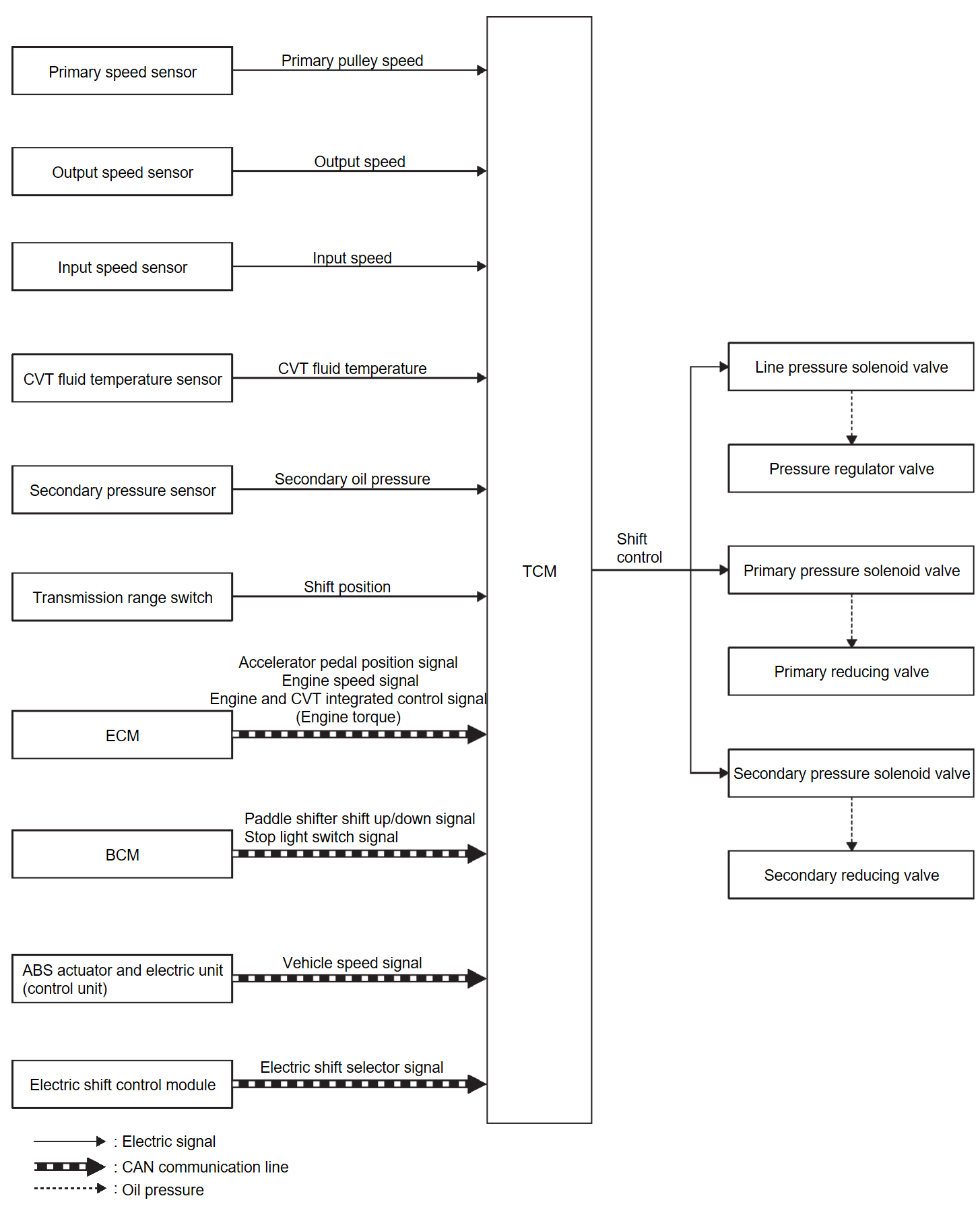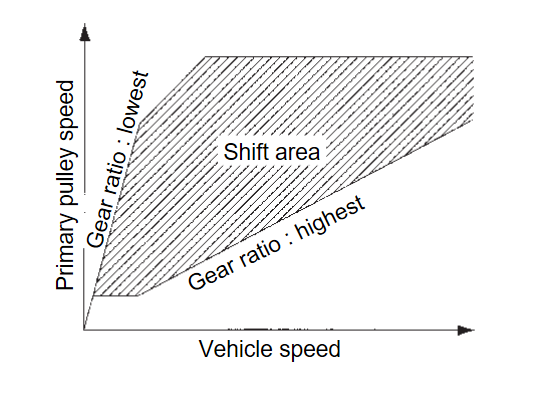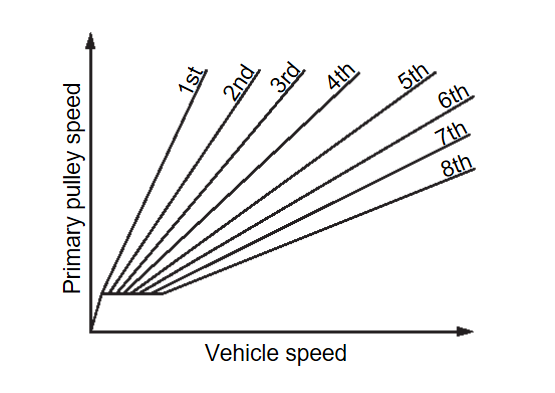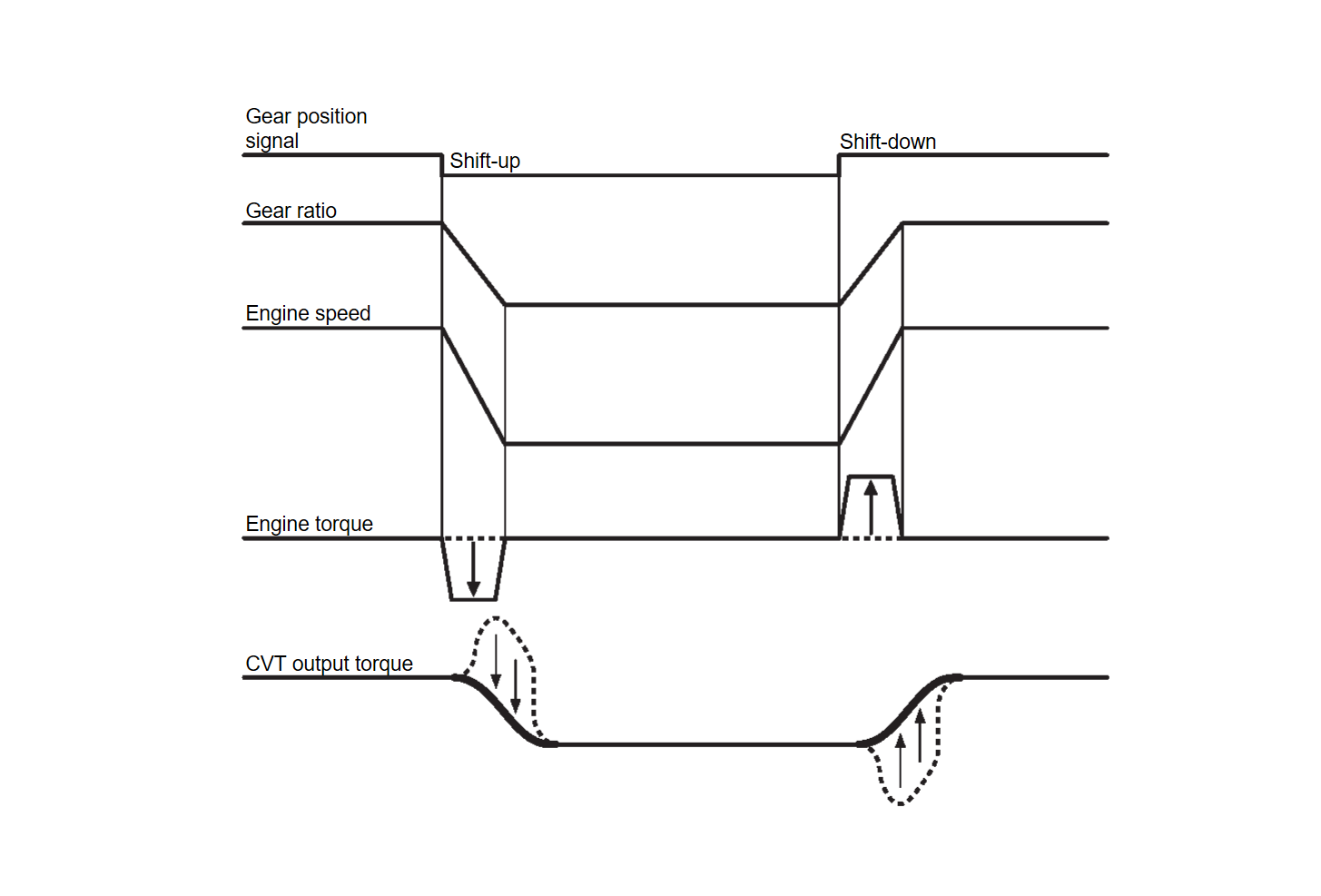System Description
DESCRIPTION
To select the gear ratio that can give the driving force to meet driver's intent or vehicle situation, the vehicle driving condition such as vehicle speed or accelerator pedal position is detected and the most appropriate gear ratio is selected and the shifting method before reaching the speed is determined. The information is output to the primary pressure solenoid valve and secondary pressure solenoid valve to control the line pressure input/output to the pulley, to determine the pulley (movable pulley) position and to control the gear position.
Shift Position Function
D Position
Gear shifting is performed in all shifting ranges from the lowest to the highest gear ratio.
M Position (Manual Mode)
By pulling the paddle shifter + side or - side in D position or M position the manual mode switch is changed over, and shift change like M/T becomes possible following the changing gear set line step by step.
- The TCM transmits the manual mode shift refusal signal to the combination meter if the TCM refuses the transmission from the driving status of vehicle when the paddle shifter shifts to UP side (+ side) or DOWN side (−side). The combination meter blinks shift indicator on the combination meter and sounds the buzzer to indicate the driver that the shifting is not performed when receiving this signal. However, the TCM does not transmit the manual mode shift refusal signal in the conditions as per the following.
- When the paddle shifter shifts to DOWN side (− side) while driving in M1.
- When the paddle shifter shifts to UP (+ side) side while driving in M8.
Blipping Control
Using engine torque, the blipping control enables a faster and more responsive gear shifting by compensating inertia torque generated from the rotational change during gear shifting in real time.
Operation
- The blipping control is activated when shifting up/down in manual mode.
note The blipping control is not activated when the vehicle is in the following conditions: - When CAN communication is abnormal.
- During the retard inhibit signal transmission from ECM within the engine-CVT integrated control.
- Engine coolant temperature is less than 20°C (68°F).
- CVT fluid temperature is more than 120°C (248°F).
- Vehicle speed is less than 20 km/h (13 MPH).
- When ABS, TCS or ASC is active.
- During wheel spin.
- ECM selects blipping control or normal shift control according to the gear position, the shift position, etc.
- The blipping control is activated when ECM judges it controllable after receiving a control permit signal from TCM.
- ECM controls engine torque, based on generated inertia torque.
Hill Climbing And Descending Control
If a downhill is detected with the accelerator pedal is released, the system performs downshift to increase the engine brake force so that vehicle may not be accelerated more than necessary. If a climbing hill is detected, the system improves the acceleration performance in re-acceleration by limiting the gear shift range on the high side.
| note | For engine brake control on a downhill, the control can be stopped with M.U.T.-III SE. |
Control In Acceleration
From change of the vehicle speed or accelerator pedal position, the acceleration request level of the driver or driving scene is evaluated. In start or acceleration during driving, the gear shift characteristics with linearity of revolution increase and vehicle speed increase are gained to improve the acceleration feel.
![[Previous]](../../../buttons/fprev.png)
![[Next]](../../../buttons/fnext.png)




